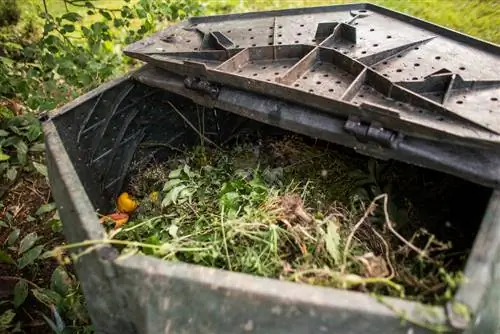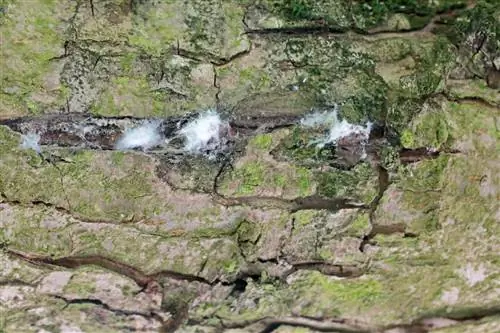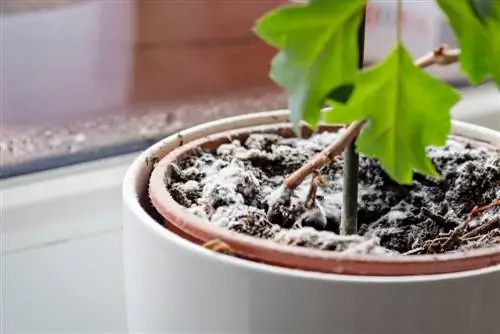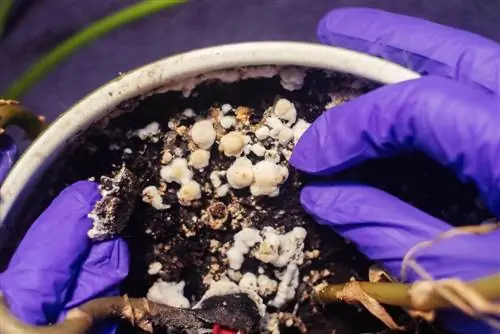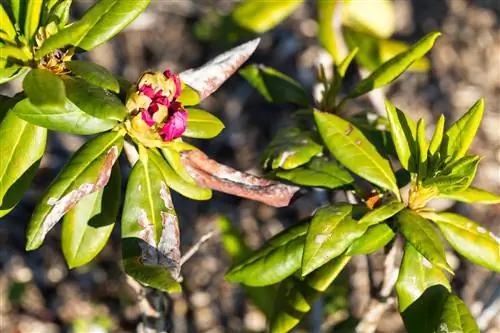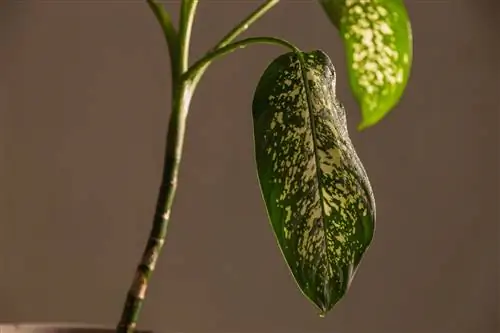- Author admin [email protected].
- Public 2023-12-16 16:46.
- Last modified 2025-01-23 11:21.
Unfortunately, inexperienced gardeners often make a few mistakes when caring for the compost. This means that the compost becomes infested with flies or mice or even becomes moldy. What do you have to do if there is mold in the compost?
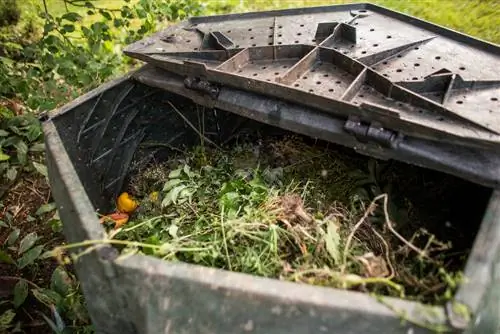
What to do if there is mold in the compost?
Mold in compost is a natural process that contributes to decomposition. If there is a lot of mold growth, you can rearrange the compost, mix wet and dry materials, mix in bark mulch or paper, add worms or use a compost starter.
Mold is completely natural in compost
Mold bacteria are found in every garden soil and of course also in compost. The bacteria contribute to decomposition and are therefore an important component in the composting cycle.
If severe mold growth occurs, this is an indication that the composter has been filled incorrectly. Most likely you have layered too many wet materials.
Mold formation is particularly common when you store a lot of moist grass clippings at once. The grasses cannot rot as quickly if they are not mixed with other materials.
What to do if there is mold in the compost?
Basically you don't have to do anything. The mold eventually breaks down and good humus is created.
If the sight bothers you very much, there are several ways to make it invisible:
- Rearrange compost
- Turning compost
- mix wet and dry materials well
- Mix in bark mulch or paper
- Fill in worms
- mix in old compost
- Use compost starter
Some gardeners simply add a few shovels of garden soil over the moldy surface.
Make compost rot faster
If you have composted a good mixture of different materials, the decomposition process will proceed quite quickly. There is then hardly any mold to be seen. If you don't have enough different substances available, add worms to the compost.
Giving compost accelerators (€37.00 on Amazon) is also helpful. You can buy these accelerators at garden supply stores. or you can easily make your own using yeast, water and sugar.
If you have an older compost pile in the garden that is already well rotted, simply fill a few scoops of this old compost into the moldy compost and dig it in a little. In this way you supply it with microorganisms that ensure the decomposition of the compost.
Tip
The molding of the compost becomes particularly noticeable when you compost leftover bread. The bread always goes moldy before it decomposes. Without this process, rotting cannot take place.

